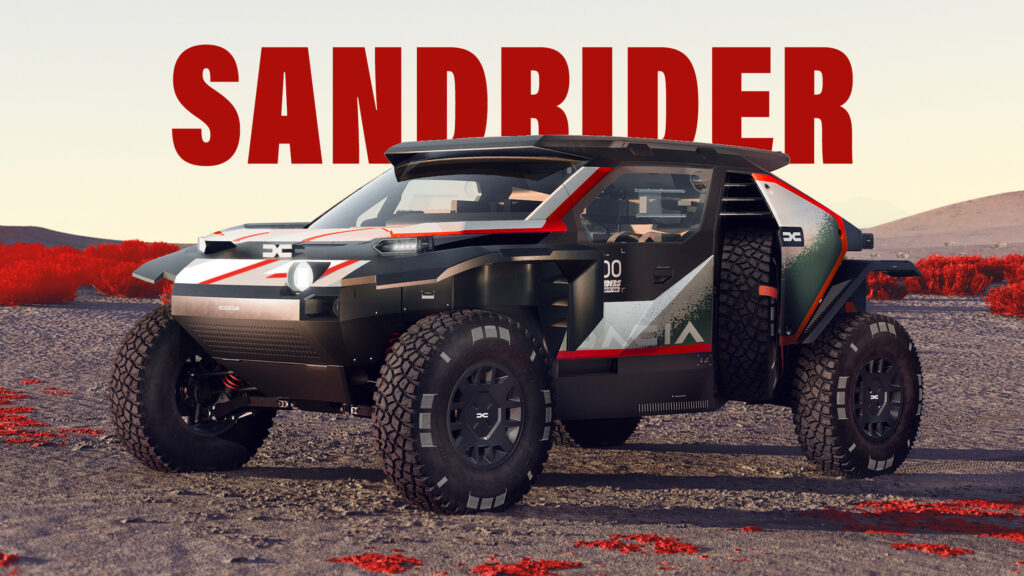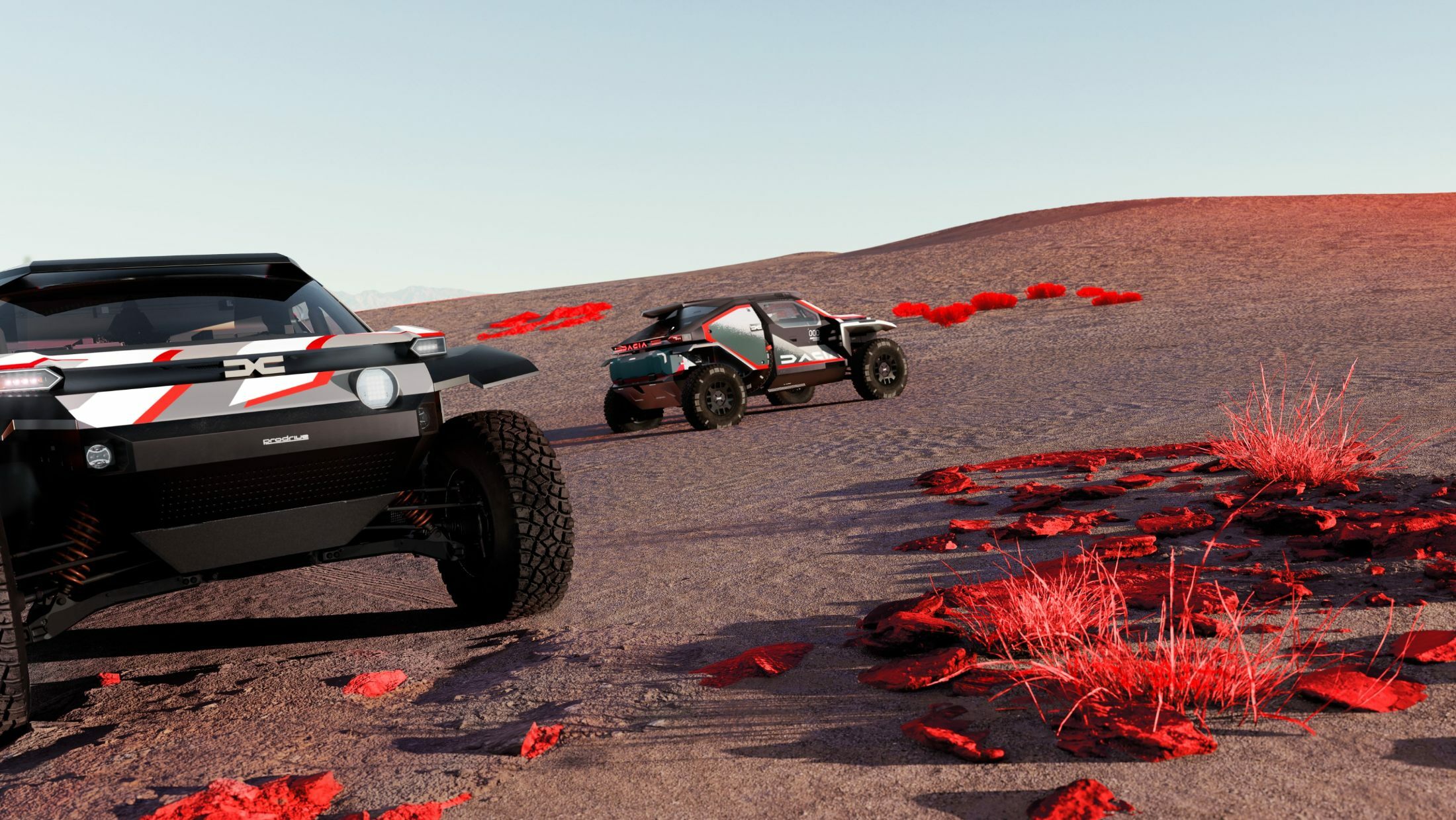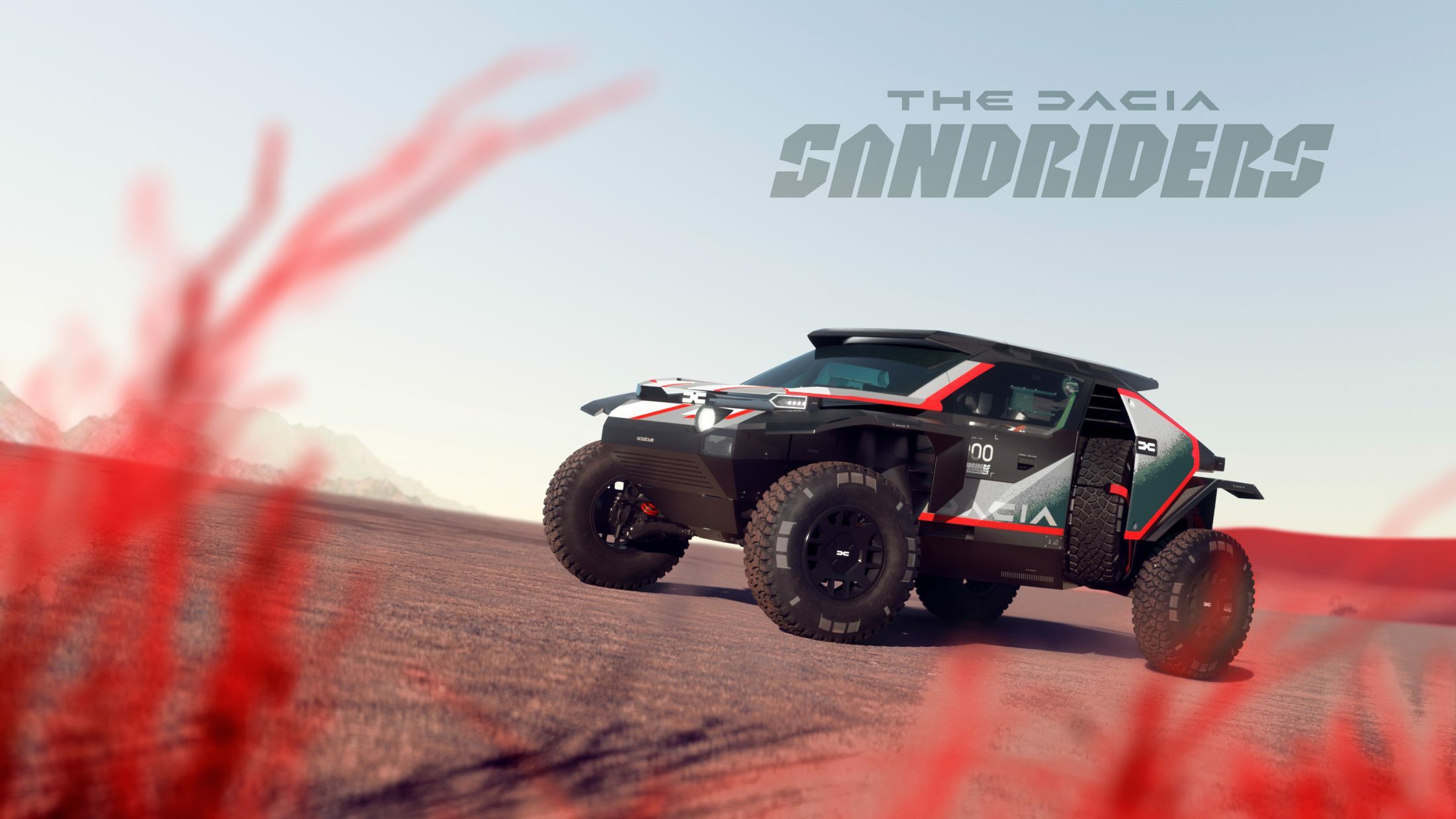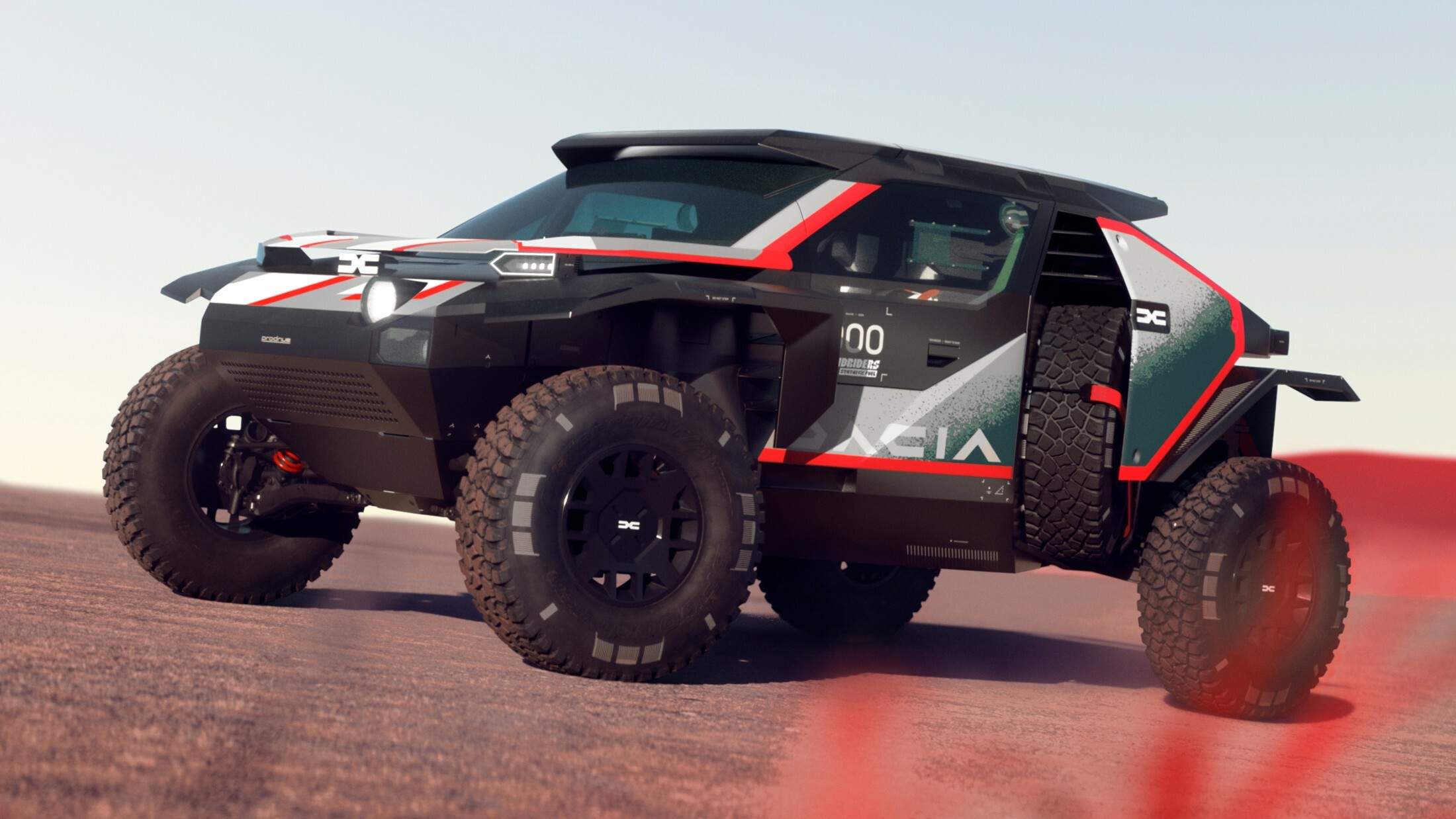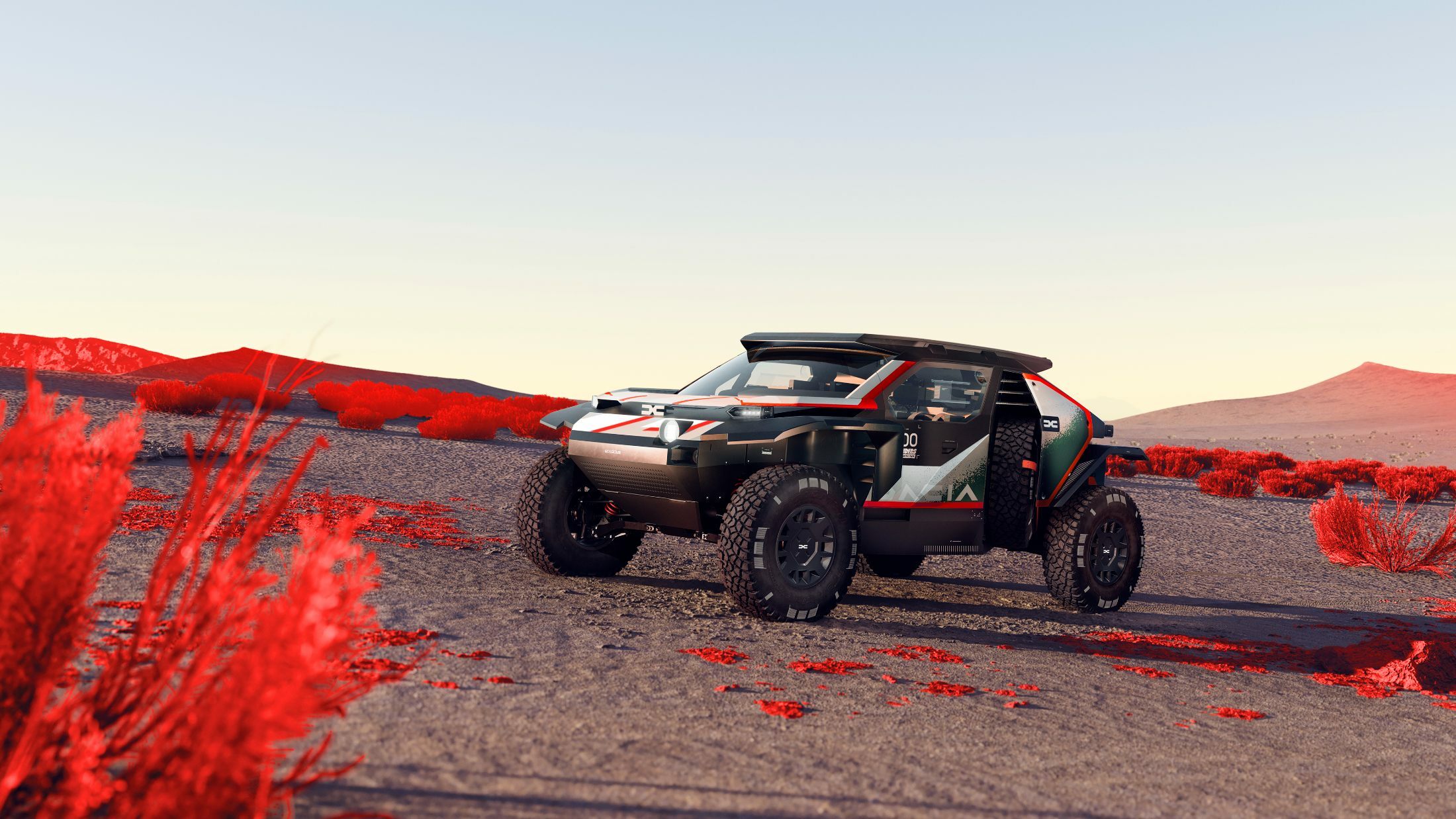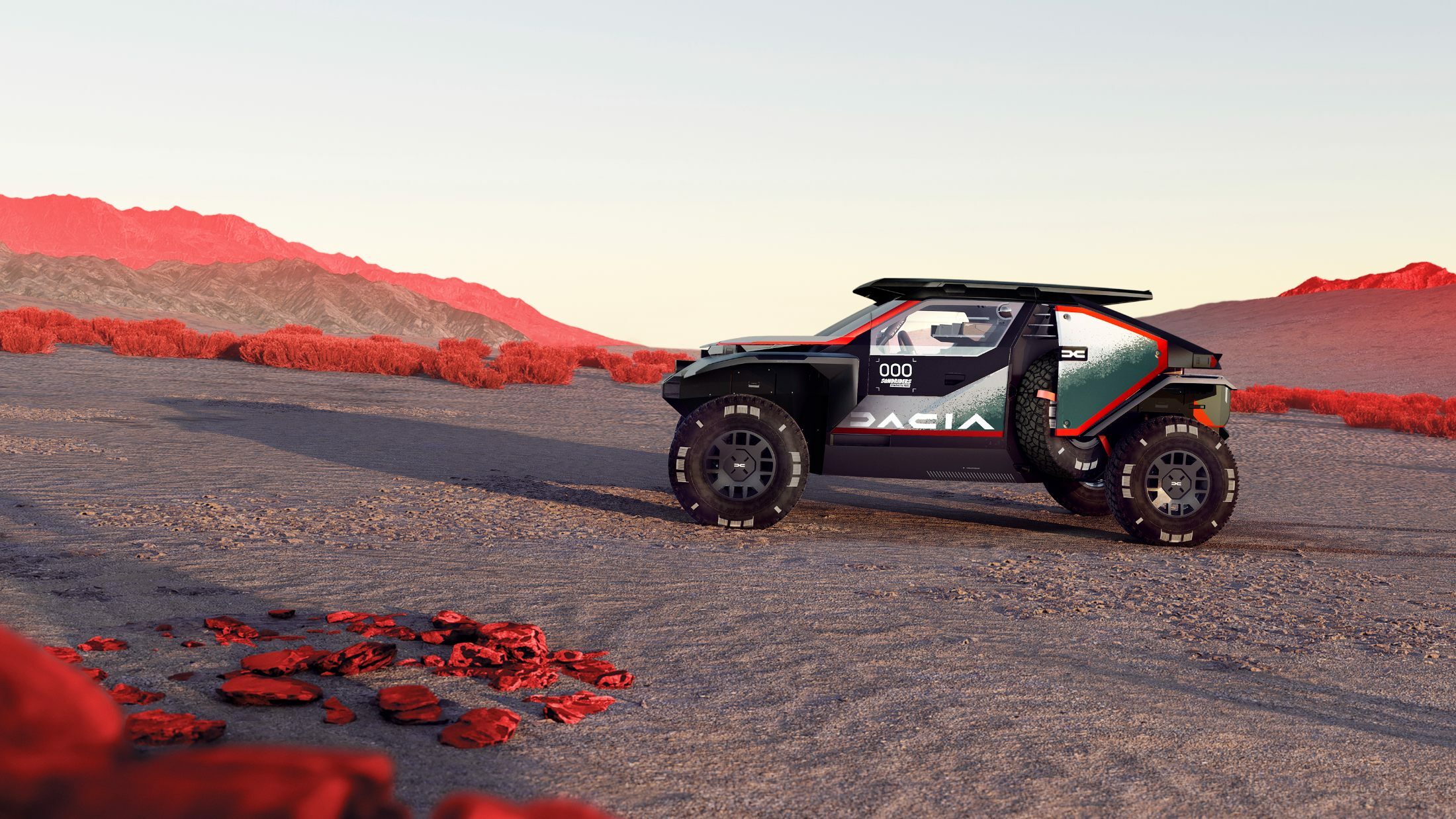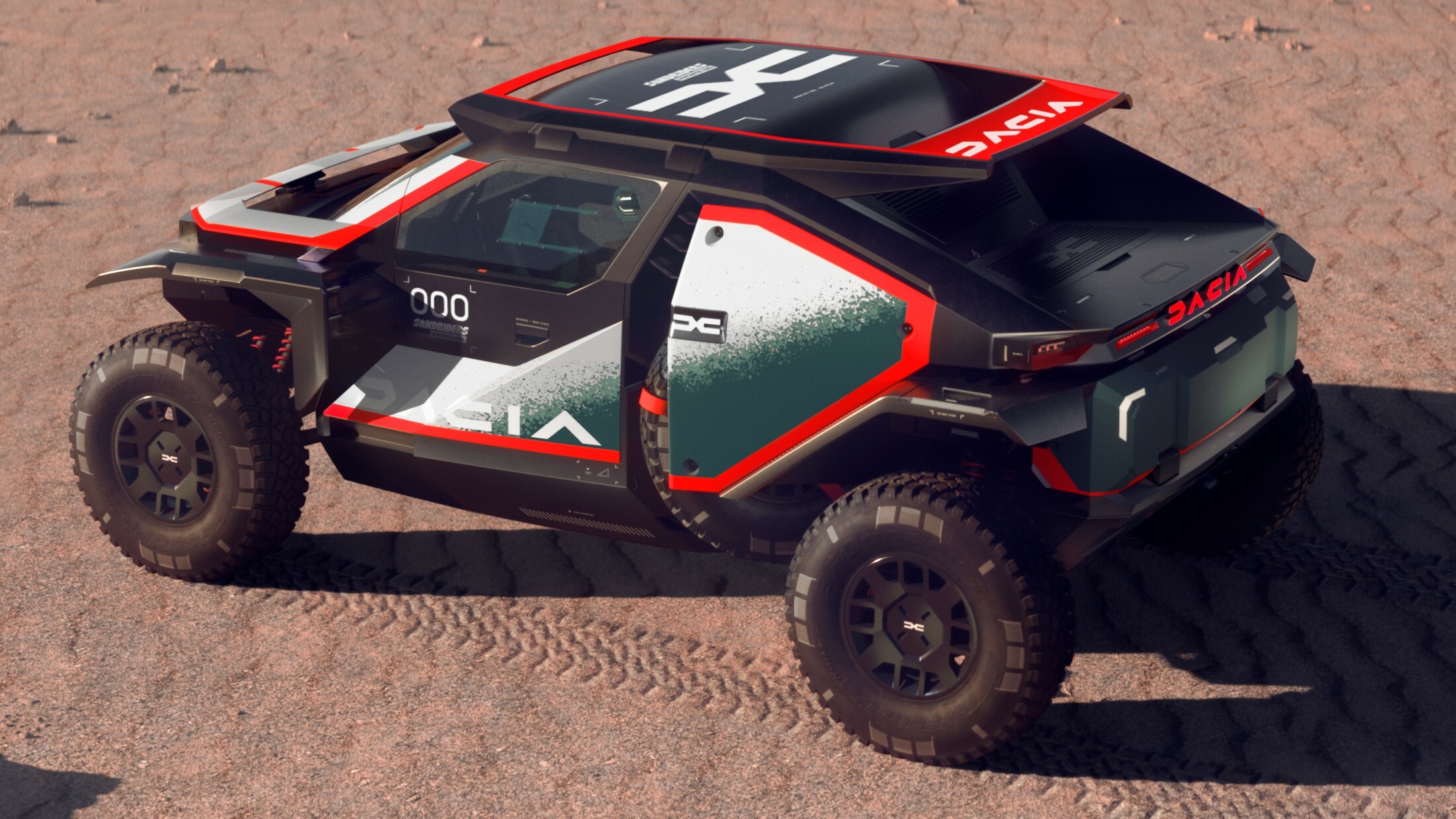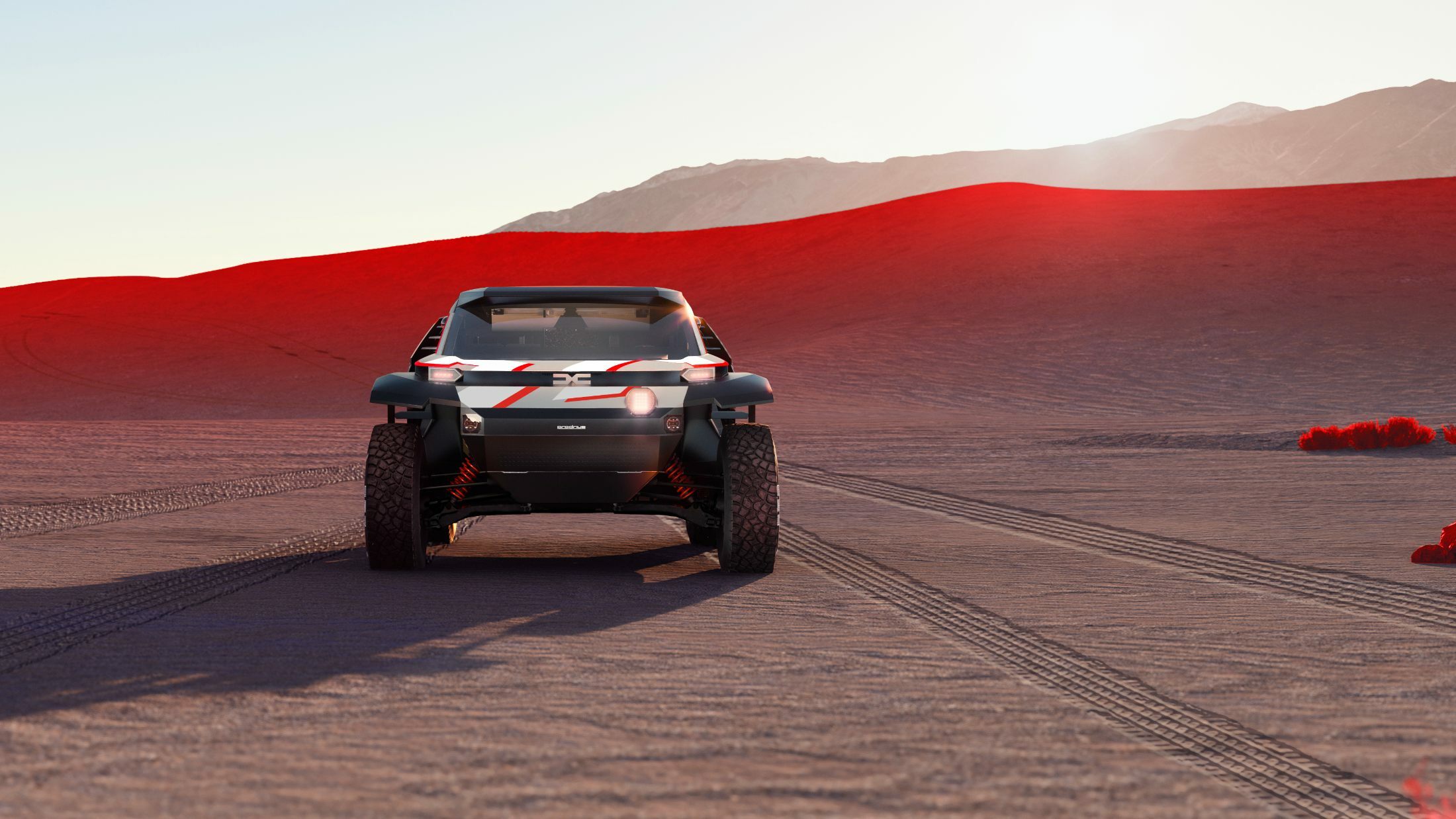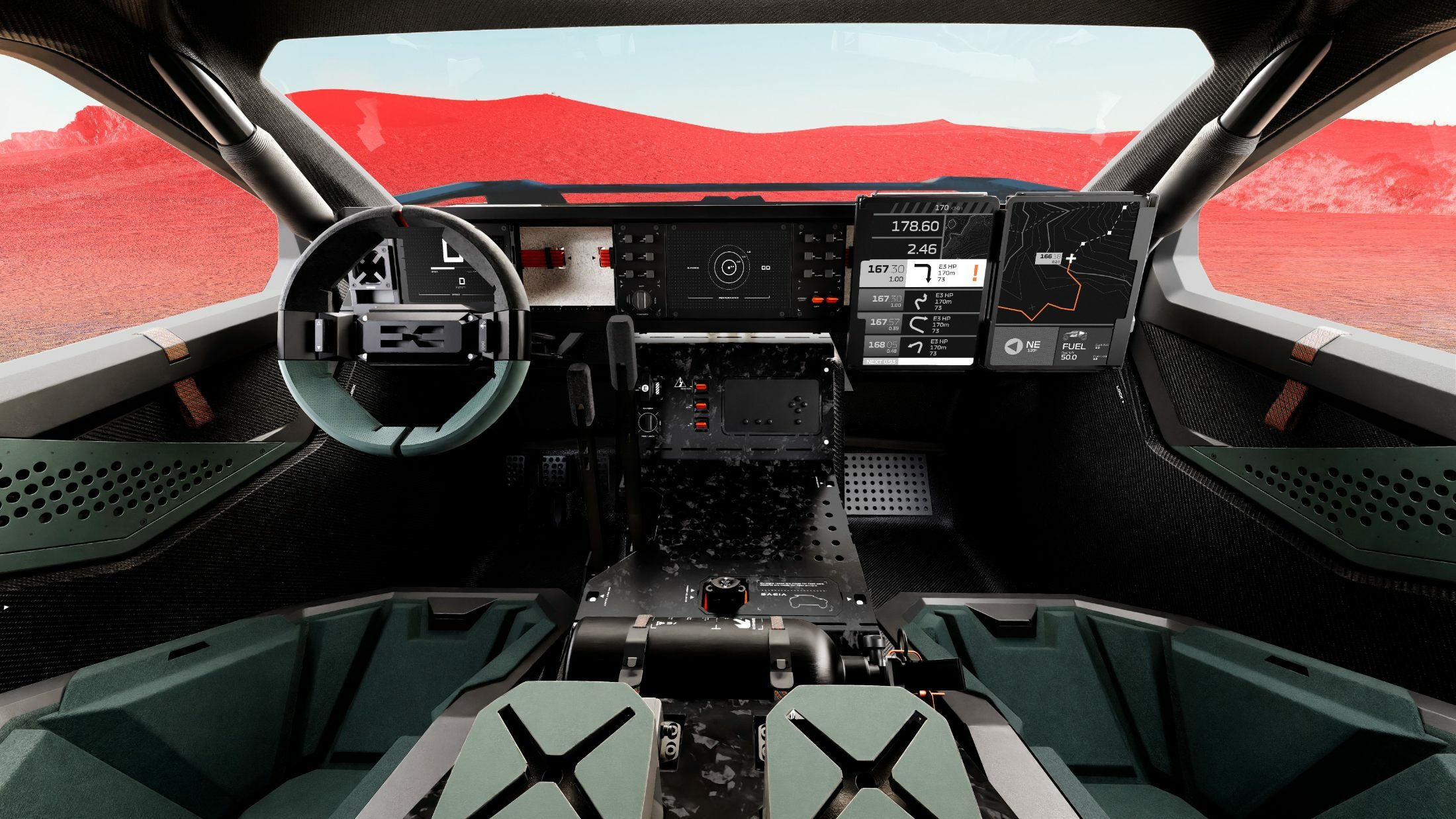Remember the fully electric Dacia Manifesto Concept from 2022? In a surprising twist, the Romanian automaker has transformed it into a V6-powered rallycar set to compete in Dakar and other World Rally-Raid Championship stages starting in 2025. The Dacia Sandrider will be homologated in the Ultimate T1+ category, backed up by UK-based motorsport experts Prodrive, and driven by a team of experienced drivers including Sebastien Loeb.
In line with Dacia’s philosophy, the rally-raid model is focused on “essentials”. The exterior design draws heavily from the concept but incorporates several modifications to support its new role. These changes encompass a more prominent front end, an enclosed cabin, enlarged cooling intakes along the profile, exposed spare wheels, and revised aerodynamics.
Similarly, the interior maintains the concept’s modular character while introducing additional navigation screens for the co-driver, anti-reflective paint on the dashboard, and a pair of Sabelt racing seats upholstered in anti-bacterial fabrics.
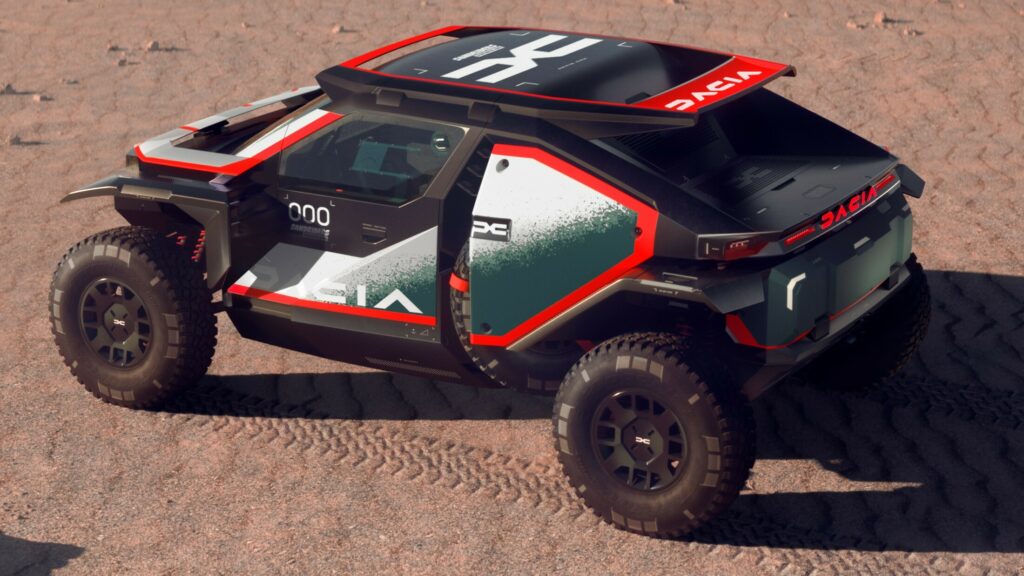
The Sandrider measures 4,140 mm (163 inches) long, 2,290 mm (90.2 inches) wide, and 1,810 mm (71.3 inches) tall. Despite its compact footrpint, it has a long wheelbase of 3,000 mm (118.1 inches) and minimum overhangs. Unlike the concept that came fitted with fancy airless tires, the rallycar rides on a more conventional set of 17-inch aluminum wheels shod in 37-inch BF Goodrich rubber.
More: New 2024 Dacia Duster Is A Tougher, Spacier And Now Electrified SUV Bargain
The carbon fiber bodywork is based on a lightweight tubular chassis. The heavy-duty double wishbone suspension has 350 mm (13.8 inches) of travel to manage the grueling terrain of rally-raid stages. More importantly, the mid-mounted twin-turbo 3.0-liter V6 engine produces 355 hp (265 kW / 360 PS) and 539 Nm (398 lb-ft) of torque, sending power to all four wheels via a 6-speed sequential transmission.
It May Have A V6 But It Can Still Be “Sustainable”
The V6 setup means that the Sandrider loses the zero-emission credentials of the fully electric Manifesto, diverging from this year’s fully electric winner, Audi. However, in alignment with Dacia’s commitment to “affordable decarbonization,” the twin-turbo V6 is powered by synthetic fuel provided by Aramco. This lower-carbon fuel blends “renewable hydrogen with sequestered CO2” and is compatible with existing combustion engines.
More: Ford Teases New Ranger Raptor Rally Truck For The 2025 Dakar Rally
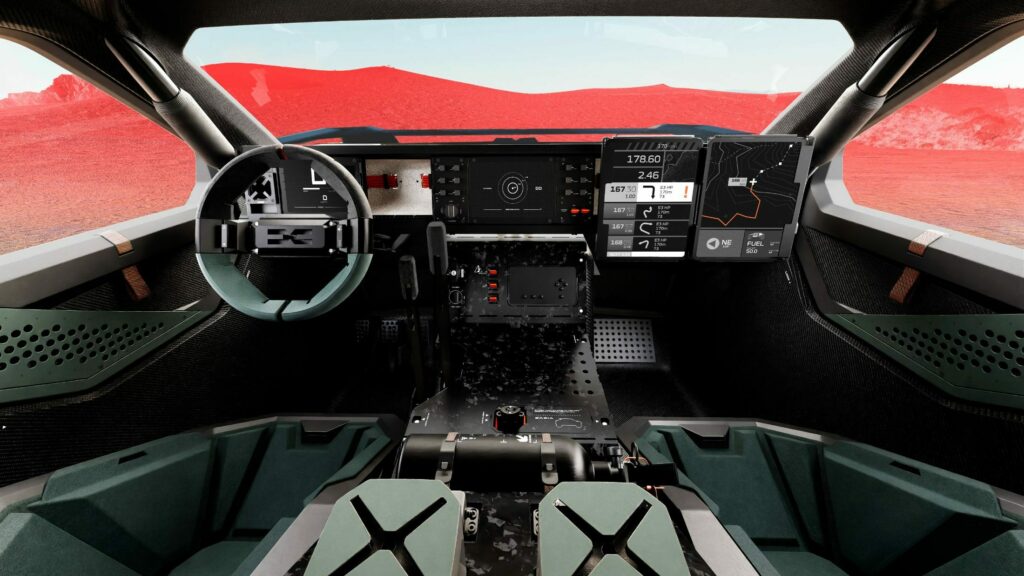
Other ways of making the Romanian automaker’s rallycar more sustainable include weight-saving measures alongside improvements in aerodynamics and heat management. More specifically, the Sandrider is 15 kg (33 lbs) lighter than comparable prototypes, boasts 10% less drag, and experiences 40% less lift due to its design and front-biased weight distribution. Additionally, it incorporates anti-infrared pigments on its carbon fiber bodywork to maintain a lower temperature inside the cabin.
Dacia claims that the Sandrider prototype is “designed to win”, creating high expectations for the future. While this sounds like a bold statement for a first-time contender, Prodrive’s involvement and the names included in the driver lineup suggest otherwise. Besides nine-time WRC champion Sebastien Loeb who has been competing in Dakar since 2016, the Sandrider will be driven by five-timer Dakar winner Nasser Al-Attiyah, and eight-time Dakar participant Cristina Gutierrez Herrero.
Dacia’s official W2RC team continues the development of the Sandrider. Its debut is scheduled for Rallye du Maroc 2024 this October, followed by a significant test at the 2025 Dakar Rally and participation in other stages of the World Rally-Raid Championship.




